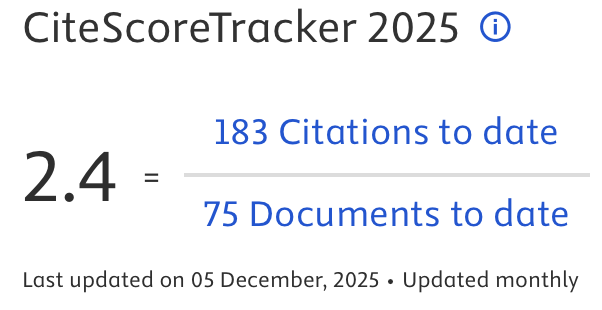Dinamika Terjemah Al-Qur'an (Studi Perbandingan Terjemah Al-Qur'an Kemenerian Agama RI dan Muhammad Thalib)
DOI:
https://doi.org/10.14421/qh.2016.1701-01Abstract
This paper compares two translations of the Qur’an: Al-Quran dan Terjemahnya by the team of the Ministry of Religious Affairs/MORA and Al-Quran Tarjamah Tafsiriyah by Muhammad Thalib. Scholars argue differently as to whether the Qur’an is translatable or not. Several classical and contemporary scholars argue that translating the Qur’an is forbidden (haram), while others allow it. Muhammad Thalib claims that Al-Quran dan Terjemahnya includes literal (harfiyah) translation, which is forbidden by scholars, and contains 3400 errors. On that basis, he composed Al-Quran Tarjamah Tafsiriyah as a correction of the former translation. I compare Al-Quran dan Terjemahnya’s translations of several verses on theological doctrine, syari’ah and mu’amalah, of which Thalib considers as containing errors, and those of Thalib’s translation himself to look for similarities and differences. The research shows that there is no significant difference between the two translations. The difference was limited to their respective method and purpose. MORA’s translation was oriented to translate the Qur’an faithfully, while Muhammad Thalib’s translation was oriented to provide an interpretive translation. For some verses, Thalib’s translation provides clearer meaning than that MORA’s. I argue that while translation errors are found in Thalib’s translation, none is found in MORA’s translation.Key words: Al-Quran Terjemahnya, Tarjamah Tafsiriyah, comparison, strength, weakness.
 Abstract viewed: 6218 times
|
Abstract viewed: 6218 times
|
 PDF downloaded = 17414 times
PDF downloaded = 17414 times
References
Anwar, Rosihon. Pengantar Ulumul Quran. Bandung: Pustaka Setia, 2009.
Bilgrami, Iqbal: Sekilas tentang Hidup dan Pikiran-pikirannya. Jakarta: Bulan Bintang, 1982.
Chirzin, Muhammad. Konsep dan Hikmah Akidah Islam. Yogyakarta: Mitra Pustaka, 2004.
---------, Kamus Pintar Al-Quran. Jakarta: Gramedia, 2011.
---------, Kearifan Al-Quran. Jakarta: Gramedia, 2011.
---------, “Berinteraksi dengan al-Qur’an”, makalah kuliah umum Fakultas Agama Islam Universitas Ahmad Dahlan, 2012.
Departemen Agama RI, Al-Quran dan Terjemahnya. Medinah: Mujamma’ Khadim al-Haramain asy-Syarifain, 1990.
Fuad Abdul Baqi, Muhammad. Al-Mu’jam al-Mufahras li Alfaz} al-Quran al-Karim. Kairo: Darul Hadits, 1991.
Lubis, Ismail. Falsifikasi Terjemahan Al-Quran Departemen Agama Edisi 1990. Yogyakarta: Tiara Wacana Yogya, 2001.
M. Hanafi, Muchlis. “Problematika Terjemahan al-Qur’an: Studi pada Beberapa Penerbitan al-Qur’an dan Kasus Kontemporer” dalam Suhuf, Jurnal Kajian al-Qur’an dan Kebudayaan, Vol 4, No 2, 2013.
Al-Qaradhawi, Yusuf. Fiqih Perbedaan Pendapat Antar Sesama Muslim, terjemah Aunur Rafiq Shaleh, Jakarta: Qisthi Press, 2007.
Republik Arab Mesir, Al-Az}ar, Kementerian Wakaf, Majelis Tinggi Urusan Agama Islam, Al-Muntakhab: Selekta dalam Tafsir Al-Quran al-Karim, terjemah Muchlis M. Hanafi dkk. Kairo: Republik Arab Mesir, Al-Az}ar, Kementerian Wakaf, Majelis Tinggi Urusan Agama Islam 2001.
Shihab, M. Quraish.Wawasan Al-Quran: Tafsir Maudhu’i atas Pelbagai Persoalan Umat. Bandung: Mizan, 2007.
---------, M. Quraish Shihab, Kaidah Tafsir: Syarat, Ketentuan, dan Aturan yang Patut Anda Ketahui dalam Memahami Ayat-ayat Al-Quran. Jakarta: Lentera Hati, 2013.
Thalib, Muhammad. Al-Quranul Karim Tarjamah Tafsiriyah: Memahami Makna Al-Quran Lebih Mudah dan Cepat. Yogyakarta: Yayasan Islam Ahlu Shuffah dan Pusat Studi Islam An-Nabawi, 2011.
---------, Koreksi Terjemah harfiyah Al-Quran Kemenag RI Tinjauan Aqidah, Syari’ah, Mu’amalah, Iqtishadiyah. Yogyakarta: Ma’had An-Nabawi Markaz Pusat Majelis Mujahidin, 2011.
---------, Al-Quran Tarjamah Tafsiriyah: Memahami Makna Al-Quran Lebih Mudah, Tepat dan Mencerahkan. Yogyakarta: Ma’had An-Nabawy, 2013.
Yahya, Mohammad. “Analisis Genetik-Objektif atas al-Qur’anul Karim Tarjamah Tafsiriyah karya Mohamad Thalib”, Tesis, Program Pascasarjana UIN Sunan Kalijaga Yogyakarta 2012.
Yusuf Ali, Abdullah. Quran Terjemahan dan Tafsirnya, terjemah Ali Audah. Jakarta: Pustaka Firdaus, 1994.
Downloads
Published
How to Cite
Issue
Section
License
Publishing your paper with Jurnal Studi Ilmu-ilmu al-Qur'an dan Hadis means that the author or authors retain the copyright in the paper. Jurnal Studi Ilmu-ilmu al-Qur'an dan Hadis uses license CC-BY-NC-ND or an equivalent license as the optimal license for the publication, distribution, use, and reuse of scholarly works. This license permits anyone to copy and redistribute the material in any medium or format and must give appropriate credit, provide a link to the license, and indicate if changes were made. If you remix, translate, transform or build upon the material you may use it for private use only and not for distribution. Jurnal Studi Ilmu-ilmu al-Qur'an dan Hadis granted an exclusive non-commercial reuse license by the author(s), but the author(s) are able to put the paper onto a website, distribute it to colleagues, give it to students, use it in your thesis, etc, so long as the use is not directed at a commercial advantage or toward private monetary gain. The author(s) can reuse the figures and tables and other information contained in their paper published by Jurnal Studi Ilmu-ilmu al-Qur'an dan Hadis in future papers or work without having to ask anyone for permission, provided that the figures, tables, or other information that is included in the new paper or work properly references the published paper as the source of the figures, tables or other information, and the new paper or work is not direct at a private monetary gain or commercial advantage.
Jurnal Studi Ilmu-ilmu al-Qur'an dan Hadis journal Open Acces articles are distrubuted under the Creative Commons Attribution-NonCommercial-NoDerivatives 4.0 International (CC BY-NC-ND 4.0). Article can be read, copy and redistribute the material ini any medium or format under the following conditions:
Attribution — You must give appropriate credit, provide a link to the license, and indicate if changes were made. You may do so in any reasonable manner, but not in any way that suggests the licensor endorses you or your use.
NonCommercial — You may not use the material for commercial purposes.
NoDerivatives — If you remix, transform, or build upon the material, you may not distribute the modified material.









